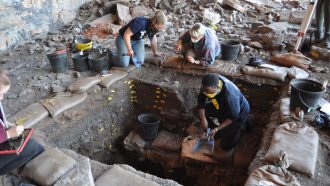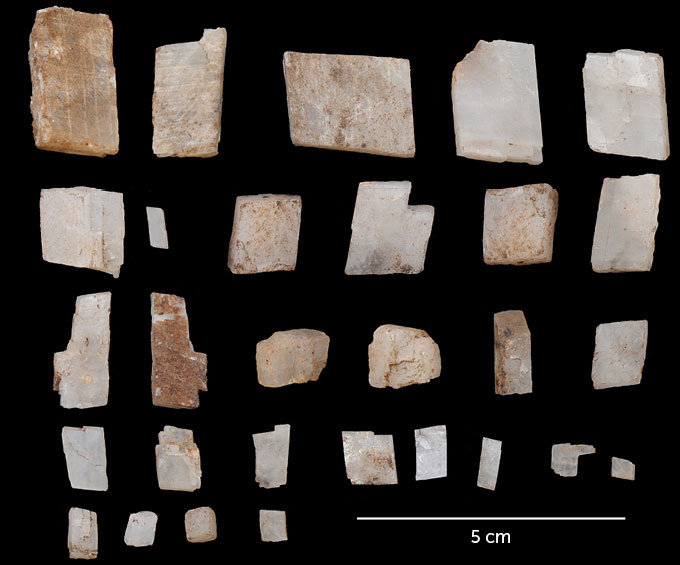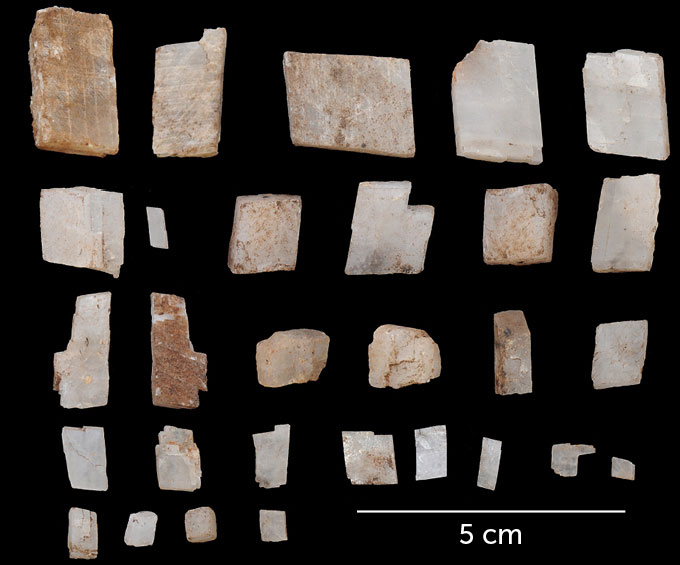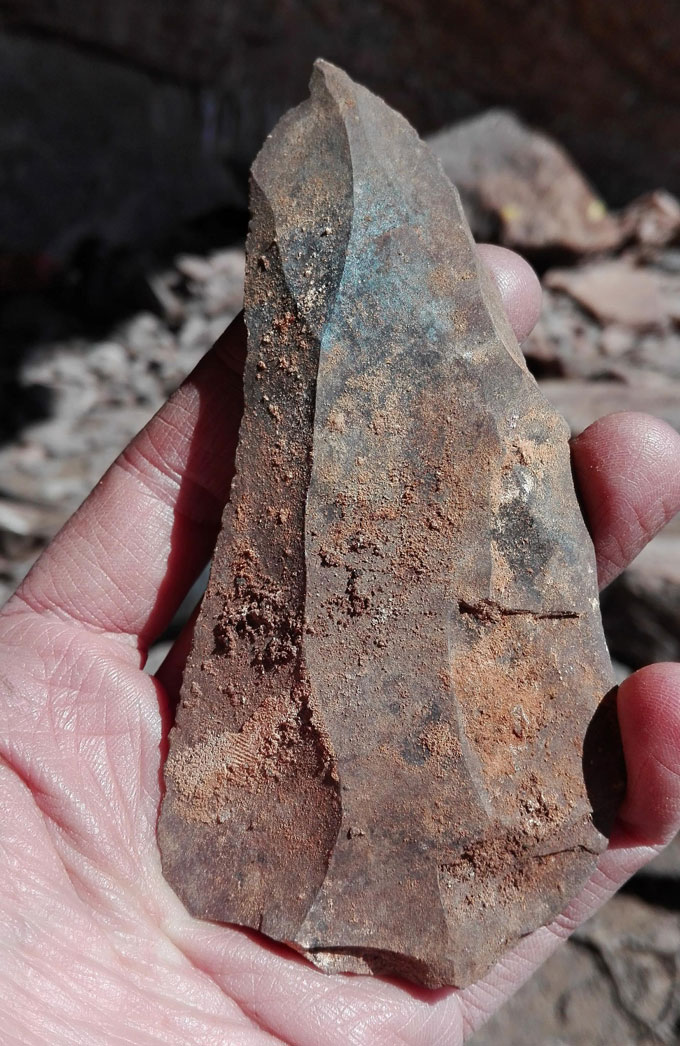
Africa’s southern Kalahari Desert is not typically regarded as a hotbed of Stone Age innovations. And yet human culture blossomed there around 105,000 years ago, back when it was green, researchers say.
Calcite crystals and other finds at a South African rock-shelter more than 600 kilometers from the nearest shoreline reflect cultural behaviors on a par with those previously reported for ancient humans living on or near South Africa’s coast, researchers report March 31 in Nature. Those coastal sites date to between roughly 125,000 and 70,000 years ago, including one where locals used tools to make paint out of pigment around 100,000 years ago (SN: 10/13/11).
Given the scarcity of human sites from that time period, it’s hard to know whether cultural innovations emerged independently in groups spread across southern Africa or originated in one particular region before being adopted elsewhere. But the new discoveries fit a scenario in which “the emergence of Homo sapiens involved the interaction of many different populations across Africa,” says archaeologist Jayne Wilkins of Griffith University in Nathan, Australia. “And that included the Kalahari Desert.”
Excavations at Ga-Mohana Hill North Rockshelter, or GHN, uncovered an ancient sediment layer containing 42 burned ostrich eggshell fragments and 22 palm-sized or smaller calcite crystals, Wilkins and her colleagues report.


Like some African hunter-gatherer groups today, ancient people at GHN may have cut holes out of ostrich eggshells to create water containers, the researchers say. Geologic studies indicated that enough rain once fell over the southern Kalahari Desert to have produced year-round water sources for ancient GHN people.
Many eggshell pieces showed discoloration from burning. It’s not clear how that burning occurred. Eggshells lay among numerous animal bones, some of which displayed possible butchery marks and signs of burning.
The calcite crystals were probably collected from local rock sources, one of which lies about 2.5 kilometers from the rock-shelter, the scientists suspect. Excavated calcite crystals hadn’t been modified in any way and had no apparent practical use, raising the possibility that these items held ritual or symbolic significance, Wilkins suspects.
Crystals have been linked to spiritual beliefs and rituals in many parts of the world. Until now, the oldest set of crystals dated to around 80,000 years ago at another South African rock-shelter located about 130 kilometers from the coast, Wilkins says.
Other GHN finds included hundreds of stone tools, prepared rock chunks from which tools were struck and a piece of red pigment bearing scrape marks.

Ancient cultural evolution in many parts of Africa remains a mystery, writes archaeologist Pamela Willoughby of the University of Alberta in Edmonton, Canada, in a commentary published with the new study. Calcite crystals found at GHN perhaps represent “an early example of ritualistic symbolic behavior,” according to Willoughby.
Any ritualistic use of the GHN crystals is difficult to demonstrate, contends archaeologist Manuel Will of the University of Tübingen in Germany. Ostrich eggshell pieces found at the Kalahari site could have been discarded after a meal, he says.
Still, the new study adds to growing skepticism about claims that human cultural advances started along African coasts, Will says (SN: 7/29/11). It’s possible, though, that bountiful habitats along southern Africa’s coastline fostered an especially broad range of cultural innovations, he suggests. Coastal sites have yielded items that weren’t found inland at GHN, including beads, bone tools and ostrich eggshells bearing engraved designs.

 A new treatment could restore some mobility in people paralyzed by strokes
A new treatment could restore some mobility in people paralyzed by strokes  What has Perseverance found in two years on Mars?
What has Perseverance found in two years on Mars?  This robot automatically tucks its limbs to squeeze through spaces
This robot automatically tucks its limbs to squeeze through spaces  Greta Thunberg’s new book urges the world to take climate action now
Greta Thunberg’s new book urges the world to take climate action now  Glassy eyes may help young crustaceans hide from predators in plain sight
Glassy eyes may help young crustaceans hide from predators in plain sight  A chemical imbalance doesn’t explain depression. So what does?
A chemical imbalance doesn’t explain depression. So what does?